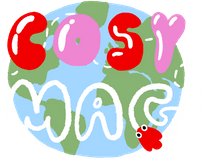Lorde’s satirical pop song titled Mood Ring, from her latest album Solar Power, received a lot of discourse online, specifically for the line “Let’s fly somewhere Eastern, they’ll have what I need.” The song was written from the perspective of a white woman from the Pluto in Scorpio generation (translation: millennials) as a commentary on society’s unquenchable thirst for spirituality and meaning.
In her Genius interview, she reiterates that this song is not from her viewpoint but someone else’s to amplify the satire she wanted to convey. She said she “wanted to paint the image of a privileged young woman sort of feeling like the deck is stacked against her a little bit.” This is important to note considering her awareness of spirituality and spiritual objects being commercialized by white people in recent years. Due to this newfound wanderlust, Asian and Asian Pacific countries bear the brunt of the fantasy sold to the West.
This isn’t a unique concept for a song with themes of existentialism and philosophy. Human beings have been thinking about the meaning of life for centuries. With the innumerable crises that have happened recently, like the pandemic, IPCC’s August report on climate change, civil wars, etc., it’s natural for people to crave spirituality to ground themselves in an attempt to seek answers.
“We ascribe meaning because we have to, because we need to," explained Lorde in the interview. She thinks that certain elements of the wellness industry are key in doing this such as crystals and sage, which are mentioned in the song. This only emphasizes a human’s need to place meaning on superficial objects or ideas that perhaps have no meaning at all, just like how we may irrationally believe in the answers of a mood ring or Magic 8 ball. "To feel 'well' and 'whole' in something like a mood ring felt representative with that to me." However, it is important to be aware of the cultural and environmental implications of using these objects for spiritual reasons.
Sage and the process of smudging was repeatedly brought up in the chorus of the song with the line, “you can burn sage and I’ll cleanse the crystals.” It has become a large part of wellness and spirituality very recently, but has been a sacred ritual by Indigenous people for centuries. The practice also has roots in Asia and the Middle East.
The process of burning the herb is called smudging. It refers to the smoke from burning of sacred and medicinal plants that is used to drive out negative energy. More specifically, many Native American tribes would use it as a way to cleanse, purify, and ward off evil spirits. On another note, its' antimicrobial properties help to get rid of bacteria, viruses and fungi. However, sage can also be consumed internally as it is said to relieve symptoms such as headaches and soreness, reduce inflammation, support digestion, and much more. Further, it was found that sage can aid in mood and memory, though further research is required.
The increase in demand of white sage has led to overharvesting of these plants, causing Indigenous communities, like the Chumash people, to call for a stop in the commercialization. Further, before this practice started to gain popularity on social media, the dark history behind it is that Native Americans were banned from smudging. The practice was illegal until 1978 and many were imprisoned or killed for smudging. There are many advocates and Indigenous people speaking out on the cultural significance of sage and other sacred plants and the damage the popularity has been creating.
An article written by Dakota Fahrenkung, a mixed Anishinaabe woman, elaborates on the history of white sage and smudge products.
Traditions were lost and therefore could not be passed down to the next generation. The cultural traditions that did survive only did so because they were practiced and passed down in secret. Native Americans were beaten and/or jailed if they were caught doing things like burning sage only 41 years ago! Because of this, my generation and younger are reaching out to our elders, sharing knowledge, and slowly relearning and reclaiming our traditions that were stolen from us. Reclaiming our traditions is necessary so that we can pass them down to the next generation and heal generations of trauma. Non-Native peoples' use of smudge products are often well-intentioned but this appropriation is still harmful and the exploitation of smudge is only a part of a larger issue.
Crystals are another tool mentioned, used to elaborate on the high demand that it has garnered the past few years.

They have become a recent global phenomenon, where in 2017, the New York Times ushered in the era of “the great crystal boom.” It also accounted for several billion dollars of the $4.2 trillion dollar wellness industry. What started as a niche hobby has now turned into a widely accepted practise, were holding crystals or placing them on your body is thought to promote physical, emotional and spiritual healing. This is understood through the crystal conducting and radiating energy onto the individual. Celebrities have played a key role in normalising their use, where they swear by their healing properties. Kim Kardashian found comfort in them after her robbery in 2016. Katy Perry carries rose-quartz for love and Adele uses them for her pre-show nerves.
Crystals were first historically referenced in magic formulas used by the Ancient Sumerians. Ancient Egyptians used stones for protection and health, some of these include lapis lazuli, turquoise, carnelian, and clear quartz. The word crystals itself came from the Ancient Greeks, with the word meaning ice. Hematite was used because of its' red color and was associated with Aries, the god of war. Thus, Greek soldiers would rub this crystal on themselves to make themselves invulnerable.
Jade plays an important part in Chinese history, dating back over 5000 years as first carvings of the crystals were traced back to the Neolithic period from 3500-2000 BCE. The aesthetic quality and ideas of purity and goodness made it highly valuable, thus, was associated with aristocracy. Its' strength was believed to be indestructible and would impart immortality on its' owner.
Those who sell healing crystals are not always transparent about the source of these crystals. Some are taken from large-scale industrial mines that are owned by companies with poor environmental records and labor violations.
Emily Atkin found in her investigation into the healing crystal industry, the origins of these crystals are unclear, with the environmental impact of this industry being hard to ignore. The overarching problem is that this industry is not regulated, in which the origins of stones are not clarified and the effects of mining are not acknowledged. Due to this, crystal businesses are able to get away with questionable and exploitative practises.
UNICEF estimates that around 40,000 children are employed in these cobalt mines, with reports that some are as young as seven years old. Children work twelve-hour days digging for the cobalt that powers our mobile phones, and in doing so they also mine by-products such as tourmaline, amethyst and smoky quartz, which can be sold off to crystal dealers for added profit. The International Labour Organisation estimates that globally there are more than one million children participating in artisanal and small-scale mining.
Yoga has globally become one of the most popular exercising methods. Despite the practice originating from northern India over 5000 years ago, articles on yearly “trends” are written like clockwork. It has been commercialized over the past decade with styles like heavy metal yoga and beer yoga taking the Western world by storm.
However, it is essential to note that the practice of yoga is a lot more than Sun Salutations, or Surya Namaskar, and the feeling of transcendence whilst meditating. It was first mentioned in the Rig Veda, one of the four sacred ancient texts that was written in Sanskrit. Yoga is one of the six schools of philosophy in Hinduism and plays a large role in Buddhism. It is a spiritual discipline that involves “adherence to nonviolence, meditation, chanting, devotional love to God, and selfless action”, according to Rachel Khona who further explains her experiences as a Hindu woman in Western yoga spaces.
Suhani Garg elaborated in an article related to the appropriation of yoga:
“In Dharmic traditions, liberation is rooted in equanimity. The irony is that yoga in the West has been commodified into a consumable subscription, exploited as and when desired. The Westernization of yoga is clearly a matter of appropriation, not appreciation. Culture appreciation typically occurs when members of a culture invite an outsider to celebrate an aspect of their culture alongside them, but how many times have you seen a South Asian person on the cover of a yoga magazine? The colonized tradition of yoga in the West is, in fact, not yoga at all.”
In countless more articles, the borderline message is that yoga has become watered down to a consumable form for those in the west with the cultural significance removed. What comes out is just the surface level of what yoga is stereotyped to be. Many have come out and explained how exploitative and disrespectful it can be to enter a yoga studio that was not started by a traditional Yogi nor by someone who has educated themselves fully on the complexities of this 5000-year-old tradition.
Mood Ring delves deep into the wellness industry and how a concept rooted in spirituality and long-established traditions has become commercialised. ‘Inner peace’ can now be sold to people through items that are now devoid of any meaning beyond only a superficial understanding of wellness, where this has been a huge hit amongst the white, wealthy and rich. As Lorde sings in the chorus: “I can't feel a thing/I keep looking at my mood ring/Tell me how I'm feeling/Floating away, floating away.” Prinita Thevarajah, co-founder of Studio Ãnada, says that “the lack of space made for healers of color rests on both the tokenization and exotification of our cultures and traditions for the purposes of capital.”
The hijacking of the wellness industry has had an impact on where these items of significance and practises stem from, creating an idea and image of wellness that is only attainable for a select few. Maybe the secret to the wellness industry is to honour the origins of the healing practises you choose to partake in and to start learning from a diverse set of people.
















